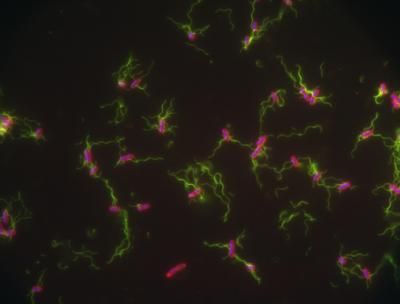Evolutionary history of three-finger snake toxins decoded
Hope for treatments for type 2 diabetes and hypertension
Advertisement
Snakebites cause around 100,000 deaths worldwide every year. Researchers at the Technical University of Munich (TUM) have investigated how the toxin emerged between 50 and 120 million years ago through the modification of a gene that also occurs in mammals and other reptiles. The results could help with the development of better snakebite treatments and lead to new knowledge for the treatment of illnesses such as type 2 diabetes and hypertension.
When venom passes into a snakebite victim, it binds onto receptors on nerve and muscle cells and interrupts communication pathways between them. This initially causes paralysis and, without an antidote, can cause death within a matter of minutes or hours. A team of researchers has studied how the protein structure of snake venoms known as three-finger toxins (3FTxs) has changed over the course of evolution.
Emergence of three-finger toxins
The team working with Burkhard Rost, a professor of bioinformatics, discovered that three-finger toxins developed over time from the Ly6 gene, which is also present in mammals and other reptiles. It is responsible for various metabolic functions such as the immune response of cells and neural regulation.
Dr. Ivan Koludarov, a researcher at the Chair for Bioinformatics and a first author of the study says: “It is inferred from previous studies that snakes diverged from other lizards around 120 million years ago. Present-day venomous snakes and other snake species diverged around 50 million years ago and both already carry functional 3FTx genes. That means that the Ly6 gene changed so much over the period from 50–120 million years ago that it now causes a strong toxic effect.”
In the course of evolution the Ly6 gene, which generates the instructions for the toxin, doubled repeatedly. Consequently, venomous snakes carry multiple copies of the gene. On these copies, various segments have mutated. As a result, the function of the protein encoded by the gene changed so radically that it no longer performs its original function and instead acts as a toxin.
Various forms of the venom
Tobias Senoner, a doctoral candidate at the Chair for Bioinformatics adds: “The gene has mutated in different ways in the various snake species. Based on the resulting protein structures, we can distinguish four forms of the 3FTx toxin. Each one has specific structures and therefore acts differently on the snake’s prey.”
Prof. Burkhard Rost explains: “For our study we collected all available information from the UniProt database, which provides data on proteins of all living organisms and viruses. In addition, we accessed biomedical and genetic information from the National Center for Biotechnology Information. We analyzed these data through the lens of artificial intelligence.”
Improvements in treatments and drug development
The insights from the study will help to improve the treatment of snakebite victims and bring about progress in drug development. The understanding of the toxins could help in the development of new treatment methods for type 2 diabetes or hypertension, for example, or better pain medications.




























































